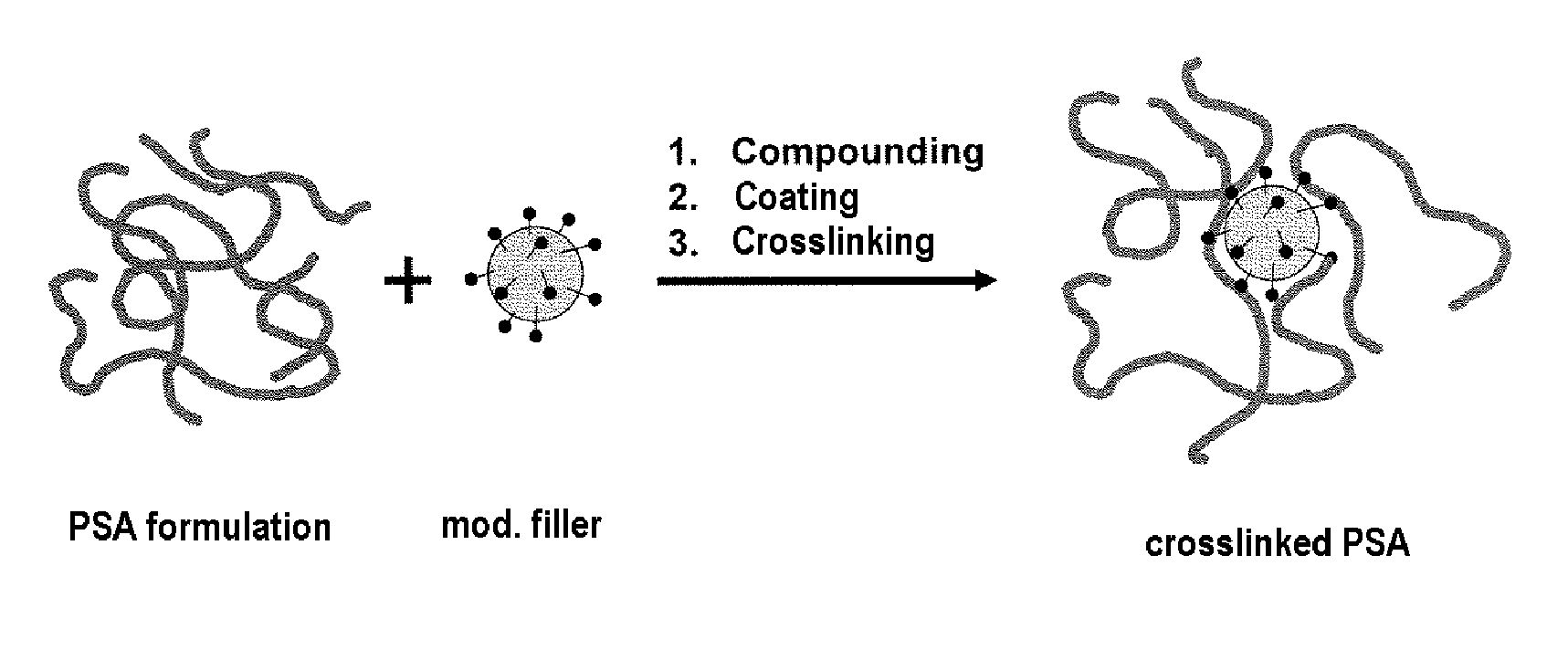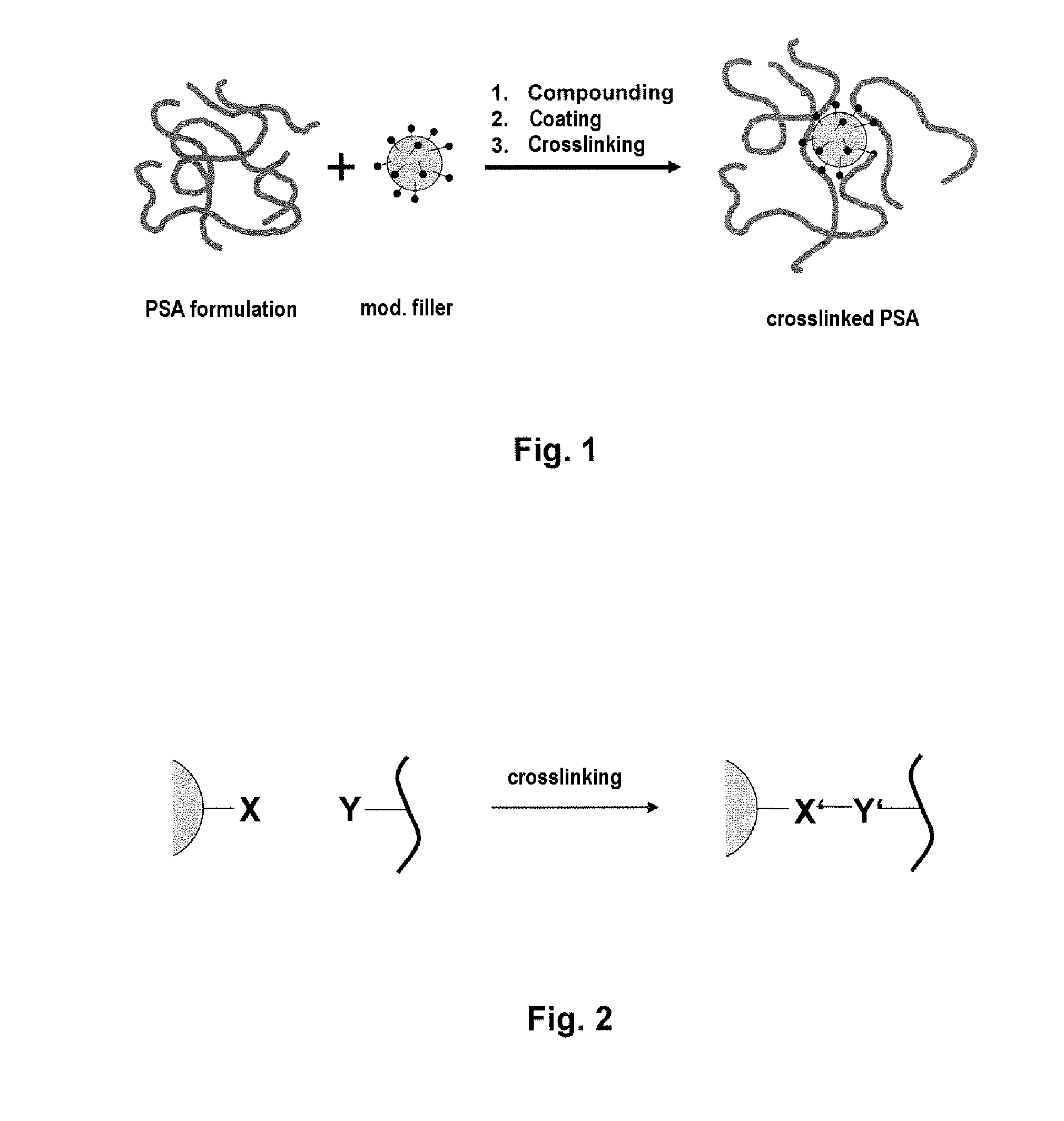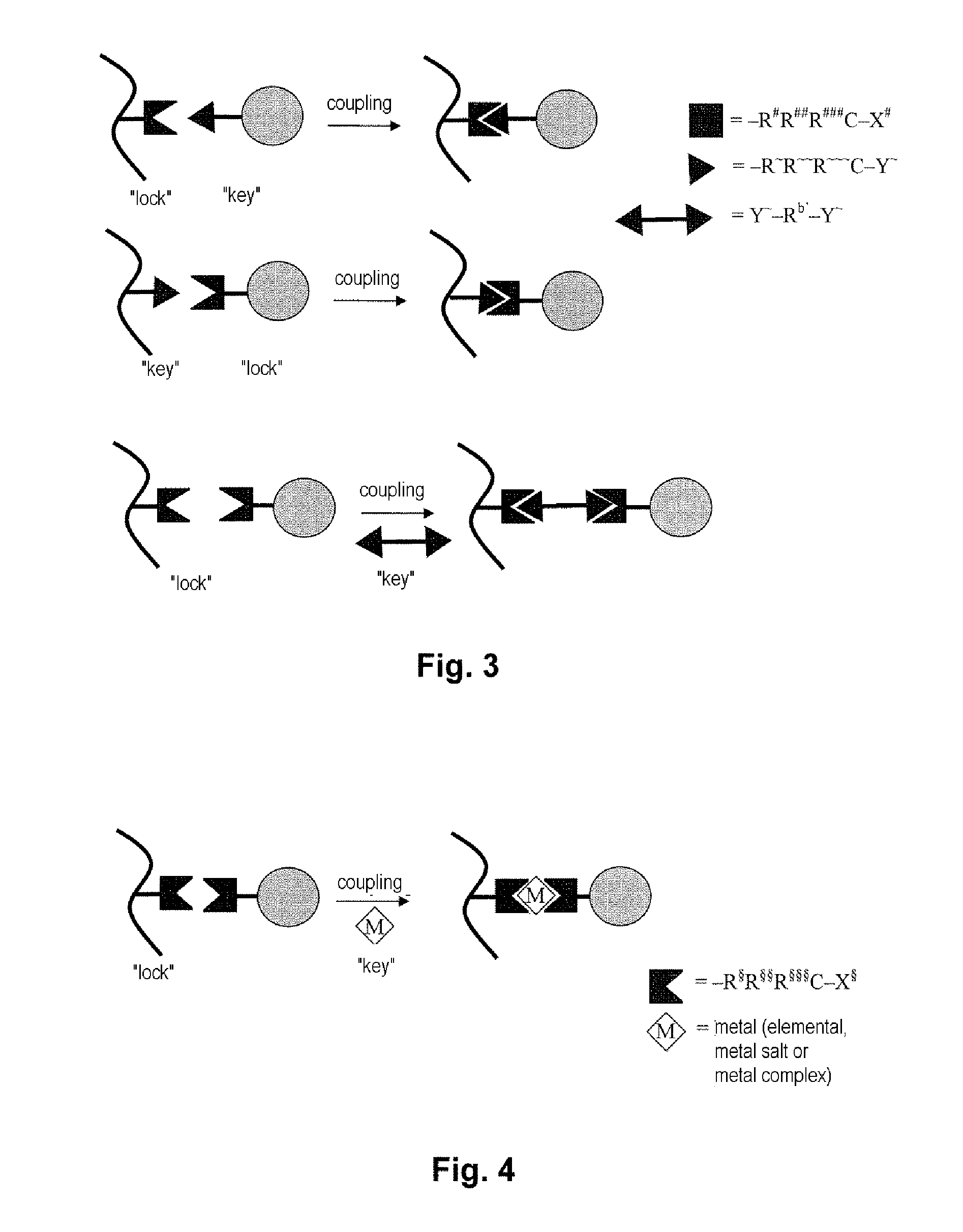Pressure-senstive adhesives and process for preparing them
a technology of adhesives and pressure, applied in the direction of pressure sensitive film/foil adhesives, film/foil adhesives, pigmenting treatment, etc., can solve the problems of reducing bond strength, material with pronounced crosslinking only a relatively low ability to dissipate deformation energy, and inability to adapt adequately to the roughness of a substrate surface. good effect of processing properties
- Summary
- Abstract
- Description
- Claims
- Application Information
AI Technical Summary
Problems solved by technology
Method used
Image
Examples
Embodiment Construction
The present invention relates to a process for preparing a crosslinked pressure-sensitive adhesive, to crosslinked pressure-sensitive adhesives obtainable by such a process, and to the use of such adhesives. The invention further embraces intermediates from such a process, particularly the composition of innovative formulations for pressure-sensitive adhesives. The combination of the innovative PSA formulations of the invention with the preparation process of the invention is likewise inventive and a central component of this specification (in this regard cf. also FIG. 1).
The invention relates to a process for preparing a pressure-sensitive adhesive based on at least one polymer A, in the course of which said at least one polymer A is crosslinked, the polymer having functional groups Y and having been admixed, further, with at least one kind of functionalized particles B (also called “filler particles” below). The particles have at least one nonpolymeric base unit and also a surface...
PUM
| Property | Measurement | Unit |
|---|---|---|
| weight fraction | aaaaa | aaaaa |
| weight fraction | aaaaa | aaaaa |
| weight fraction | aaaaa | aaaaa |
Abstract
Description
Claims
Application Information
 Login to view more
Login to view more - R&D Engineer
- R&D Manager
- IP Professional
- Industry Leading Data Capabilities
- Powerful AI technology
- Patent DNA Extraction
Browse by: Latest US Patents, China's latest patents, Technical Efficacy Thesaurus, Application Domain, Technology Topic.
© 2024 PatSnap. All rights reserved.Legal|Privacy policy|Modern Slavery Act Transparency Statement|Sitemap



